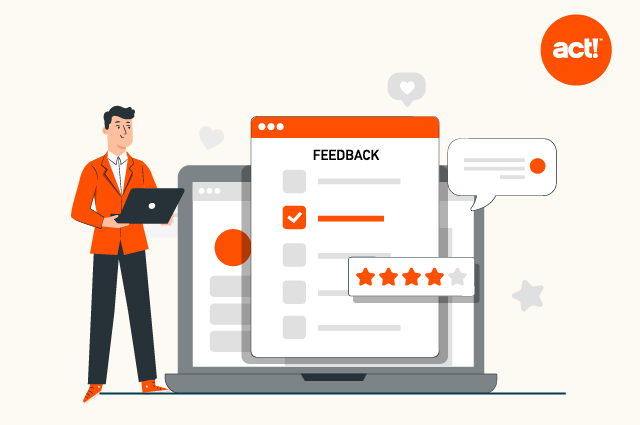Loyalty programs can be powerful tools to keep customers coming back to your business and reduce your customer churn rate. This can increase overall sales. In fact, an Adobe report found businesses in the U.S. and Europe must bring in five to seven new customers to equal the revenue of one repeat customer.
If you are looking to implement a customer loyalty scheme, you’re in good company. Businesses of all kinds use them; from independent cafes to global airlines.
In this article, we’ve broken the process of building a customer loyalty program into three steps: choosing a type of program, choosing a reward, and measuring the effectiveness of your program.
Step One: Choose a Type of Program that Appeals to Your Customers
There are many types of loyalty programs. Each one has its advantages and will be best suited to a different type of business and customer. Three common types of customer loyalty schemes are stamp programs, points programs, and tiered programs.
Stamp Program
Stamp programs are the simplest type of customer loyalty program. Every time a customer makes a purchase, they get a stamp. When they collect a certain number of stamps, they receive a predefined reward.
An example of a successful stamp based rewards program is the one run by Hotels.com. When a customer books a night in a hotel via the platform, they receive a stamp. When they have ten stamps, they can trade this in for a free night in a hotel.

Stamp programs are great because the customer knows exactly what they have to do to receive a reward, as well as what the reward is. They are also easy to run; at their most basic you can literally use a card and a stamp. They can also be done digitally through products like Stampme or The Magic Stamp.
Points Program
Points programs are another popular type of customer loyalty program. In these programs, every time a customer spends money at your business, they receive points. The customer is then able to spend these points at your business or trade them in for rewards.
This type of program is more flexible than stamp programs; both in terms of what the customer needs to do to receive points and how they spend their points. This makes them good for companies that sell a wide range of products.
However, this flexibility means if you use a point program you need to make it easy for customers to understand how they can collect points and what the points are worth.
Tiered Program
With tiered loyalty programs, customers collect points every time they make a purchase. When they hit a certain number of points, they move up a tier. The higher the tier, the more exclusive benefits they receive.
This type of program is a good fit for brands that want to maintain a feeling of exclusivity. Most airlines run multi-tiered air miles programs that give customers benefits such as lounge access or priority boarding.
Step Two: Choose a Reward Your Customers Will Love
Once you have chosen the type of program you will use, you’ll then need to choose a reward. The reward will depend on the type of program you have selected, your business, and your customers. Here are some things to think about.
The reward should be of a high enough value to make it worth saving for, yet not so high that it eats too far into your profit margin.
A common recommendation for points based-based programs is that customers receive one percent back on the amount of money they spend. However, you should also consider things like what your competitors are offering as well as your profit margin.
The reward also needs to be something the customer wants. A good example of this is a coffee shop that offers free coffee to customers who collect ten stamps. The owner of the shop knows that the customer finds value in the reward because they have already bought ten of the same product.
You should also take into consideration your customers and your brand. If you are a high-end brand with financially well-off customers, offering low-value freebies or cashback may not be particularly attractive. Doing so could even cheapen your brand. Instead, think about using a tiered program that gives customers VIP benefits.
A great example is the EIP Program run by designer fashion store Net-a-Porter and Mr Porter. EIP members get direct access to a personal shopper, as well as advance previews of clothes and sales.
This is likely to be more attractive than freebies to the website’s clientele, especially when you consider estimates suggest you need to spend around $70,000 annually to gain access to the program.

Step Three: Measure the Effectiveness of Your Program
You must take steps to measure whether your customer loyalty program is effective. Knowing this will tell you if it’s worth continuing with your program as it is, or whether you should make some changes. Here are two ways you can measure the effectiveness of your customer loyalty program.
Participation Rate
Your participation rate will show you the percentage of customers that sign up for your program. To calculate this rate, simply divide the number of customers who sign up for your program by your total customers.
Your customer participation rate tells you how attractive your rewards program. According to Smile.io, the average customer participation rate in a customer loyalty program is 23 percent.
If your rewards program has a much lower rate than this, there are things you can do to try to increase it:
- Increase the exposure of your program. Perhaps customers aren’t signing up because they don’t know about it.
- Make it easier for customers to sign up for your program. For example, think about only asking the customer for the minimum amount of data necessary to run your program.
- Perhaps customers don’t find the reward you are offering enticing enough. If you think this is the case, try experimenting with a more valuable reward.
- Simplify the points collection process. If customers aren’t sure what they need to do to gain rewards, they may be put off participating in the program.
- Reduce the amount customers need to collect to receive a reward. By making the rewards more achievable, customers may be more likely to take part in the program.
Redemption Rate
Your loyalty program’s redemption rate shows how many of the people enrolled in your program redeem a reward. To calculate your redemption rate, divide the number of customers who have collected a reward by the total number of people in your program.
If you have a low redemption rate, you should first look at your product and customer experience and check you are offering great value to customers. Assuming you are, there could be several reasons why you have a low redemption rate:
- It’s too early. If you have recently unveiled your scheme, you may just need to wait a while for people to collect enough points.
- Your program is difficult to use. Think about making it easier for customers to collect and spend points.
- It is too difficult to collect enough points to gain rewards. You could reduce the number of points customers need to collect to gain a reward or add in lower value rewards that customers can redeem with fewer points.
- The reward isn’t attractive enough. If people don’t find value in the program, they are less likely to take part in the scheme.
Wrapping Up
Introducing a customer loyalty program can be an effective way for a business that already provides a great customer experience to encourage customers to be loyal. This can result in increased purchases and, ultimately, more success for your business.





